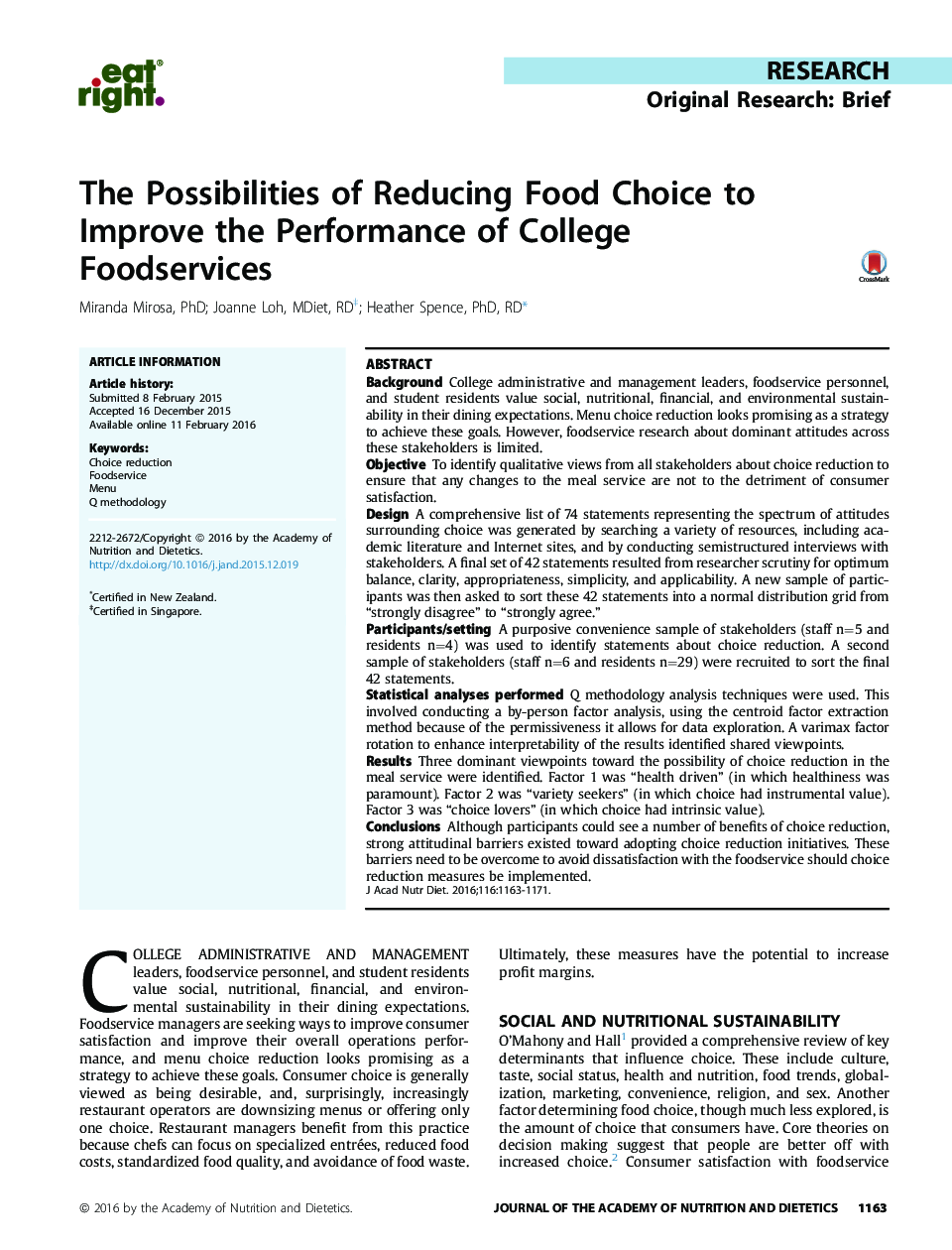| Article ID | Journal | Published Year | Pages | File Type |
|---|---|---|---|---|
| 5869328 | Journal of the Academy of Nutrition and Dietetics | 2016 | 9 Pages |
BackgroundCollege administrative and management leaders, foodservice personnel, and student residents value social, nutritional, financial, and environmental sustainability in their dining expectations. Menu choice reduction looks promising as a strategy to achieve these goals. However, foodservice research about dominant attitudes across these stakeholders is limited.ObjectiveTo identify qualitative views from all stakeholders about choice reduction to ensure that any changes to the meal service are not to the detriment of consumer satisfaction.DesignA comprehensive list of 74 statements representing the spectrum of attitudes surrounding choice was generated by searching a variety of resources, including academic literature and Internet sites, and by conducting semistructured interviews with stakeholders. A final set of 42 statements resulted from researcher scrutiny for optimum balance, clarity, appropriateness, simplicity, and applicability. A new sample of participants was then asked to sort these 42 statements into a normal distribution grid from “strongly disagree” to “strongly agree.”Participants/settingA purposive convenience sample of stakeholders (staff n=5 and residents n=4) was used to identify statements about choice reduction. A second sample of stakeholders (staff n=6 and residents n=29) were recruited to sort the final 42 statements.Statistical analyses performedQ methodology analysis techniques were used. This involved conducting a by-person factor analysis, using the centroid factor extraction method because of the permissiveness it allows for data exploration. A varimax factor rotation to enhance interpretability of the results identified shared viewpoints.ResultsThree dominant viewpoints toward the possibility of choice reduction in the meal service were identified. Factor 1 was “health driven” (in which healthiness was paramount). Factor 2 was “variety seekers” (in which choice had instrumental value). Factor 3 was “choice lovers” (in which choice had intrinsic value).ConclusionsAlthough participants could see a number of benefits of choice reduction, strong attitudinal barriers existed toward adopting choice reduction initiatives. These barriers need to be overcome to avoid dissatisfaction with the foodservice should choice reduction measures be implemented.
